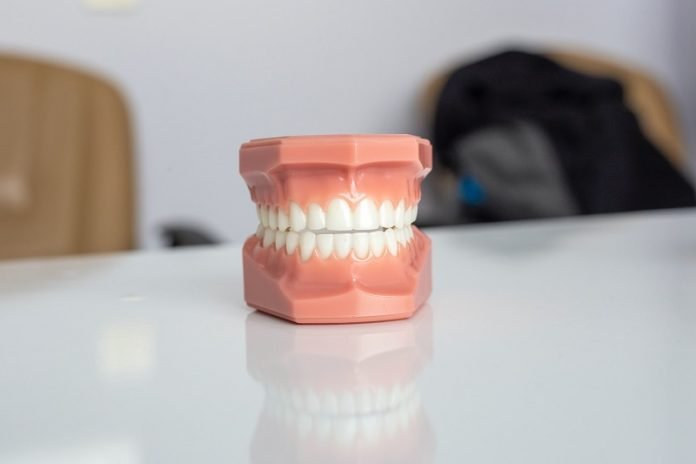
In a study from NYU College of Dentistry, scientists developed a single score to describe the level of cytokines in saliva, and this score is linked with the severity of clinical gum inflammation.
It could hold promise for measuring how well a patient responds to treatment for gum disease, predicting gum disease recurrence, or detecting ongoing inflammation related to systemic diseases.
Periodontal (or gum) disease is a chronic, inflammatory condition that affects roughly half of the adults.
Marked by inflamed gums, which can bleed and detach from the tooth, periodontal disease results from the complex interaction between an imbalance of healthy and unhealthy bacteria under the gumline and the immune system’s response.
This response produces high levels of cytokines—small proteins that signal the immune system—in the inflamed gums, especially pro-inflammatory cytokines such as IL-8, IL-1β, IL-6 and TNFα.
Periodontal disease is also linked to systemic conditions including cardiovascular disease, diabetes, and Alzheimer’s.
Scientists believe that gum inflammation contributes to these conditions through both indirect pathways (cytokines boosting systemic inflammation) and direct pathways (cytokines traveling to a specific organ like the heart or brain), but studying this is difficult due to the challenge of measuring cytokines in the fluid found deep in the pockets in the gums.
Fortunately, cytokines are also found in the saliva, which is easier to collect. In the PLOS ONE study, the researchers wanted to know if clinically detected gum inflammation could predict the level of cytokines found in saliva.
In the study, the researchers evaluated the gums and saliva of 67 adults, ages 45 and older, who had some degree of periodontal disease but were otherwise healthy.
To measure their clinical periodontal inflammation, the researchers used a formula called the Periodontal Inflamed Surface Area (PISA), which is calculated using measurements of the depth of pockets in the gums and bleeding upon probing.
PISA provides a single measure of periodontal inflammation; a higher PISA score indicates worse inflammation.
The team found that PISA scores were strongly linked to the new cytokine scores, independent of other factors including age, gender, smoking, and body mass index (BMI).
The higher a cytokine score, the greater the gum inflammation.
This demonstrates that a single score encompassing several salivary cytokines correlates with the severity of periodontal inflammation.
If the cytokine score is validated in larger and more diverse patient populations, it could be used to better understand periodontal disease progression and recurrence, as well as the potential connection to other systemic conditions.
If you care about gum health, please read studies about new causes of tooth decay and gum diseases, and common heartburn drugs may benefit your tooth and gum health.
For more information about gum health, please see recent studies about mouthwash that may increase your tooth damage, and results showing this common gum disease may double your risk of high blood pressure.
The study was conducted by Angela Kamer et al and published in PLOS ONE.
Copyright © 2023 Knowridge Science Report. All rights reserved.



